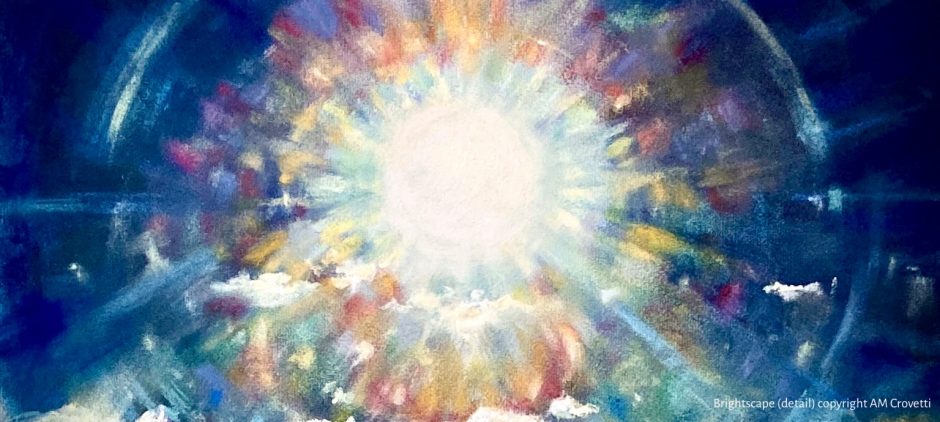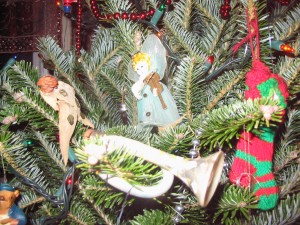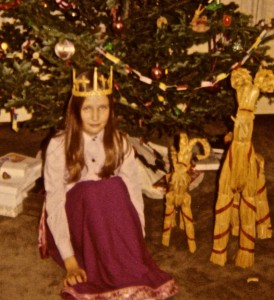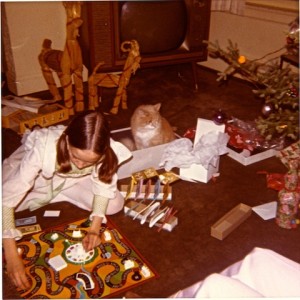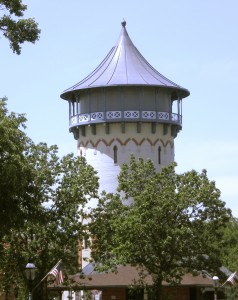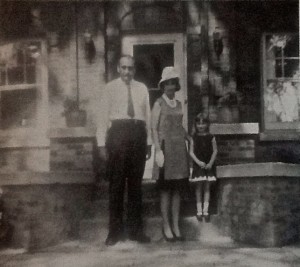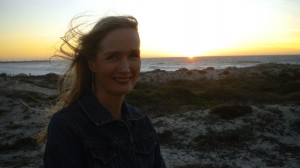One Christmas, when I was in grade school at Blythe Park Elementary and when soldiers—including one of my cousins—were fighting in Vietnam, my father erupted when another cousin criticized our country’s involvement in the war. I only had a vague understanding of current events at the time and no understanding whatsoever as to why my father was angry. In my childhood home emotions often ran high, but my parents were artists—they were allowed to be bit temperamental. No matter, Christmases in Riverside, Illinois were always merry and bright and will always hold a special place in my heart. I am nostalgic, I suppose, for something that has become more beautiful than it seemed at the time. Distant memories have crystalized into a fairytale. However, the best fairytales have scary parts.
In the Riverside 1972 of my imagination, twinkling white lights and wreaths with red velvet bows adorned all the houses, and luminaries—candles set in brown paper lunch bags—lit the walkways at Christmastime. In our kitchen my mother, of Swedish descent, baked “pepparkakor” and spritz cookies, while my father—a Czech—sang “Good King Wenceslas.” On St. Lucia’s Day, the Swedish festival of lights, I was given the St. Lucia crown to wear, even though I was the youngest daughter and Swedish custom dictated that the crown be worn by the eldest. (My teenage sister was far too cool for tradition. She wore mini skirts and blue eye shadow and slipped out the backdoor to mysterious destinations.)
Down the block from my house, at Blythe Park, every student participated in the annual “Christmas Sing.” With pride, reverence, and complete ignorance of non-Christian traditions, I sang, along with my classmates, “Silent Night” and “Joy to the World.” It would be years before I realized that not every student in our town was Christian. (In 2001, my son entered kindergarten in a Chicago Public School and stood on stage with his diverse group of classmates and belted out songs of Hanukkah and Kwanzaa as well as Christmas; it was then when I absorbed the omission at Blythe Park and the homogeneity of my own childhood.)
Riverside, proud village planned by landscape architect Frederick Law Olmsted, with its curvilinear streets and tree-filled parks, owns an imperfect past. Similarly, the story of my family is a study in chiaroscuro. My talented and high-strung parents battled constantly. At night, they sat side by side in their Danish modern chairs, sipped cocktails, shared a love of art but failed to find peace. Beyond the dysfunction within my home and others like it, the decade disappointed. In the wake of the excitement promised by the sixties and songs by the Beatles, the Vietnam War left us damaged, hopes of racial harmony ended with assassinations, the Cold War threatened mutual assured destruction, and the economy languished. Then Reagan was elected, my parents sold the house on Eastgrove Road, and we moved always from Riverside forever. I went off to college, another story began.
He was still too young to know that the heart’s memory eliminates the bad and magnifies the good, and that thanks to this artifice we manage to endure the burden of the past. But when he stood at the railing of the ship… only then did he understand to what extent he had been an easy victim to the charitable deceptions of nostalgia.
Perhaps Gabriel García Márquez is right and our nostalgia exists for a past that never existed. But I also think that there truly was a certain perfection to those days—a perfection I failed to perceive at the time. It exists at this very moment, too, but is often missed amid all the doing and working and struggling to succeed. Maybe Carly Simon got it right when she wrote, “these are the good old days,” in her 1971 hit, “Anticipation.”
This holiday season, I will try to anticipate less, be present more. I will worry little about the baking, the cards, the gifts, or the wrapping. I will focus more on taking in the beauty and stillness of winter and the joy of celebrations with loved ones. I will carve out moments of quiet reflection. I will be here and now.
